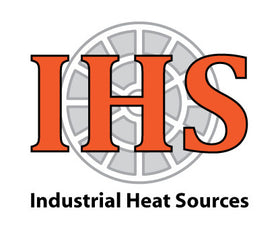Top 6 Environmental Benefits of Thermoplastic Welding in Manufacturing

Commonly Used Thermoplastic Welding Processes
There are several commonly used thermoplastic welding processes, including the following:
External – Thermal Welding Processes
- Hot Gas (Air) Welding
- Hot Plate Welding
- Hot Wedge Welding
- Infrared Welding
- Extrusion Welding
- Laser Welding
Internal – Mechanical Welding Processes
- Solvent Welding
- Spin Welding
- Stir Welding
- Vibration Welding
- Ultrasonic Welding
Internal – Electromechanical Welding Processes
- Resistance/Implant/Electrofusion Welding
- Dielectric Welding
- Induction Welding
- Microwave Welding
These versatile manufacturing processes not only enhance efficiency but also significantly contribute to meeting sustainability goals. Learn more about these benefits—and others—below.
1. Reduced Material Waste
Thermoplastic welding precisely joins plastic components without the need for additional fasteners or adhesives. Unlike traditional welding methods that often generate material waste through cutting and machining, thermoplastic welding minimizes these losses. For some applications, thermoplastic welding processes enable manufacturers to utilize plastic materials as an alternative to traditional fabrication materials to achieve higher efficiency. This, in turn, reduces the overall demand for raw resources and curbs the environmental impact associated with mining, extraction, and processing.
Thermoplastic welding provides strong welded joints through molecular bonding, which results in a weld that is stronger than the initial material itself. It provides a reliable bond that can withstand an excessive amount of pressure and stress. Various types of plastics can be welded, as well as complex and irregular shapes. These benefits make plastic welding processes ideally suited for integration into automated assemblies and production lines.
>>Related read: 10 Tips for Successfully Welding Plastics
2. Enhanced Energy Efficiency
Compared to conventional manufacturing methods, thermoplastic welding conserves more energy. This is because the process involves localized heating and fusion of plastic components, which requires less energy than extensive machining or molding processes. This translates to lower greenhouse gas emissions, contributing to a more sustainable manufacturing industry.
When selecting your plastic welding tools and equipment, be sure to choose products that match your specific needs. Using a suitable welding process that can provide the exact amount of heat you need can further contribute to reduced energy consumption. For example, manufacturing processes with faster cycle times result in improved production throughput and lower operating costs. After identifying which welding process is ideal for your application, then it is important to incorporate concise and consistent operating parameters (temperature, dwell time, etc.) for your process. Some of these include:
- Determining your temperature and flow profiles for the plastic substrates being welded to fine tune your process parameters.
- Making equipment improvements, such as variable frequency drives, soft start drives, and motors with higher energy efficiency ratings.
- Monitoring and maintaining preventative maintenance schedules for auxiliary equipment such as piping systems, heat exchanger systems, chiller systems, etc.
- Upgrading older equipment control platforms with newer technology that includes higher energy-efficient components and systems, as well as improved control algorithms.
- Implementing continuous improvement programs.
It’s also critical to consider your application. For example, if you’re welding a single-ply flexible plastic, you may want to use the IHS Type 1600 Hot Air Tool or Forsthoff Mini Electronic Plastics Speed Welding Kit. Alternatively, if you’re welding a pipeline, the Munsch MAK-18-S Handheld Extrusion Welder, Munsch Wedge IT Multi-Eco Wedge Welding Machine, HSK Easyweld Mobile Butt Welding System, Sonics X-Press Ultrasonic Welding Machine, or Ritmo Stargun Uno Double T° Handheld Extruder may be a better fit for you (plus, don’t forget a tester kit like the Buckleys PST-100 Complete Spark Tester Kit!).
>>Related read: How to Execute the 4 Most Common Types of Plastic Welds
3. Extended Product Lifecycle
Plastic welding enhances the durability and strength of plastic components, extending the lifespan of products. These attributes are especially important in industrial and commercial environments, where components must be able to withstand extreme temperatures and loads. Increased tensile and load strength of thermoplastic welded joints allow for robust and long-lasting joints. As a result, manufacturers can produce goods that are less prone to wear and tear, ultimately reducing the frequency of replacements. This not only conserves resources but also diminishes the environmental impact associated with disposing and recycling frequently replaced items.>>Related read: A Beginner's Guide to Plastic Welding with Hot Air Hand Tools
4. Elimination of Harmful Adhesives
Traditional manufacturing often relies on adhesives that may contain harmful chemicals, contributing to pollution and posing health risks. For some applications, plastic welding is a viable alternative to adhesives, creating a safer environment for manufacturing personnel and reducing the release of hazardous substances into the environment. This shift toward cleaner manufacturing processes aligns with global efforts to minimize the adverse effects of industrial activities on both human health and the planet as a whole.>>Related read: 10 Plastic Welding Accessories That Can Instantly Improve Your Efficiency
5. Recyclability and Circular Economy
Thermoplastic welding facilitates the recycling of plastic components by enabling easy disassembly. When joining methods such as adhesives or metal fasteners are used, these materials usually need to be separated and removed from the plastics before they can be recycled. The removal process is often difficult or impossible for recycling companies, which has led to an increasing number of manufacturers using thermoplastic welding processes. These process improvements make plastic parts and assemblies easier and more cost effective to recycle. This is crucial in the development of a circular economy, where materials are continuously recycled, reducing the demand for new raw materials and minimizing waste. The ability to recycle plastic components through welding promotes a closed-loop system that supports the principles of sustainability.>>Related read: The 5 Most Common Types of Plastic Welding Joints
6. Emissions Reduction
By minimizing material waste, utilizing energy more efficiently, and promoting the use of recyclable materials, plastic welding contributes to a substantial reduction in overall carbon emissions. As industries strive to meet transformative carbon neutrality targets, adopting plastic welding in manufacturing processes becomes a tangible and impactful step toward achieving these environmental goals.
Reap the Environmental Benefits of Plastic Welding Tools Today
Interested in enhancing the sustainability of your operation? Let us help you find the right plastic welding tool for your manufacturing application. Contact our team via phone or email and get the tool you need today.
- Robert Heater







